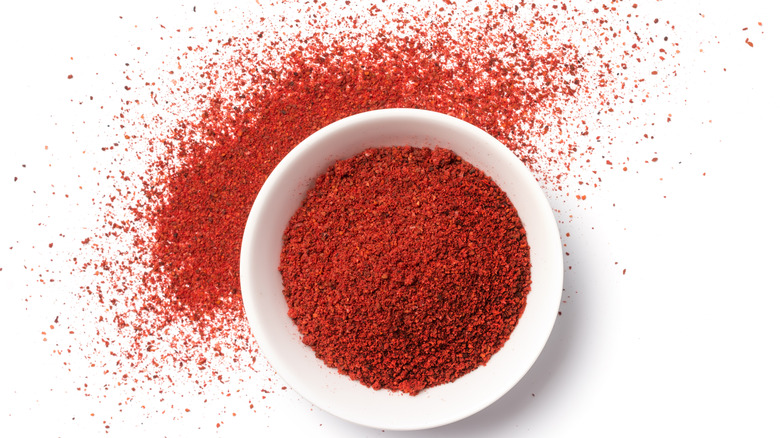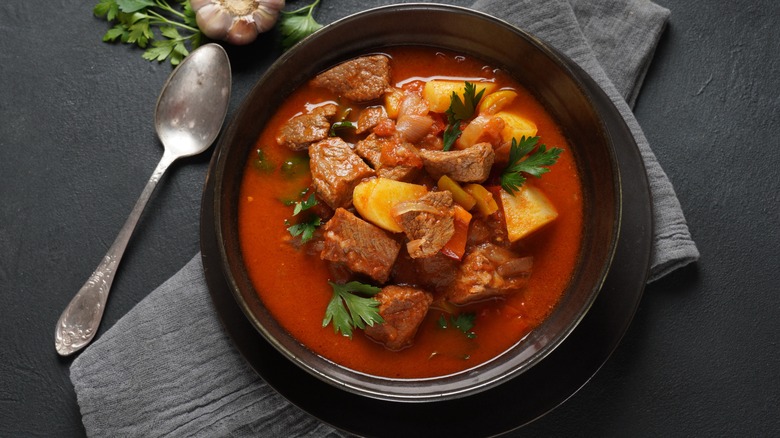Here's How Paprika Became Such An Important Part Of Hungarian Cuisine
Paprika is huge in Hungary. In fact, it's the country's official national spice, per Pepper Scale. The spice is produced from the pods of a nightshade shrub, one which hails from the tropics of the Western Hemisphere, according to Encyclopedia Britannica. Today, China, India, and Spain are leading exporters of paprika, per Tridge.
After planting in spring, farmers harvest the crop in late summer and early fall before drying out and then grounding up the pods. The Hungarian Paprika notes that the resulting spice can keep for up to a year. Paprika can be hot, sweet, or anywhere in between. The standard type you'll find on supermarket shelves is sweet, and it looks a lot like red chili powder, which is earthier. Aside from seasoning, paprika also serves as a garnish due to its vibrant redness. The Hungarian Paprika says the spice has inflammatory and painkilling health benefits, as well as plenty of vitamin C.
Hungarian paprika comes in eight different varieties, each with its own flavor. Usually, Hungarian paprika is used in dishes like chicken paprikash, goulash, pastes, salads, salamis, sandwiches, sausages, soups, and stews, as noted by The Hungarian Paprika. How did it become such an important ingredient in Hungary?
Hungarian paprika's history
The cultivation of the paprika plant goes back as far as 7,000 B.C.E., per Pepper Scale, specifically in Brazil and Bolivia at first. However, the plant grew naturally in other parts of the South American continent, as well as Central America, Mexico, and the West Indies, as stated by Encyclopedia Britannica. Of course, Europeans didn't find out about paprika until the Old World and New World began to interact in full force in the late 1400s.
As Pepper Scale explains, paprika was brought back to Spain to be used as a houseplant, a practice that spread across Europe. According to The Hungarian Paprika, the plant could be found in Hungary as far back as the 1500s, but it was originally used by the noble caste for the same decorative purpose.
One odd aspect of this history is that paprika had an entirely different name back then, one that's been lost to time. Furthermore, the exact party responsible for introducing paprika to Hungary is unclear. Some claim the culprit is Portugal since Hungary was looking to replace pepper after eastern trade routes closed. Others point to the Turks, who ruled over Hungary in the 1500s and 1600s. It wasn't until the 1700s, though, that paprika became a cooking spice and started to appear in recipes. No matter how it happened, the result is the same, and Hungarian cuisine is spicier than ever!

